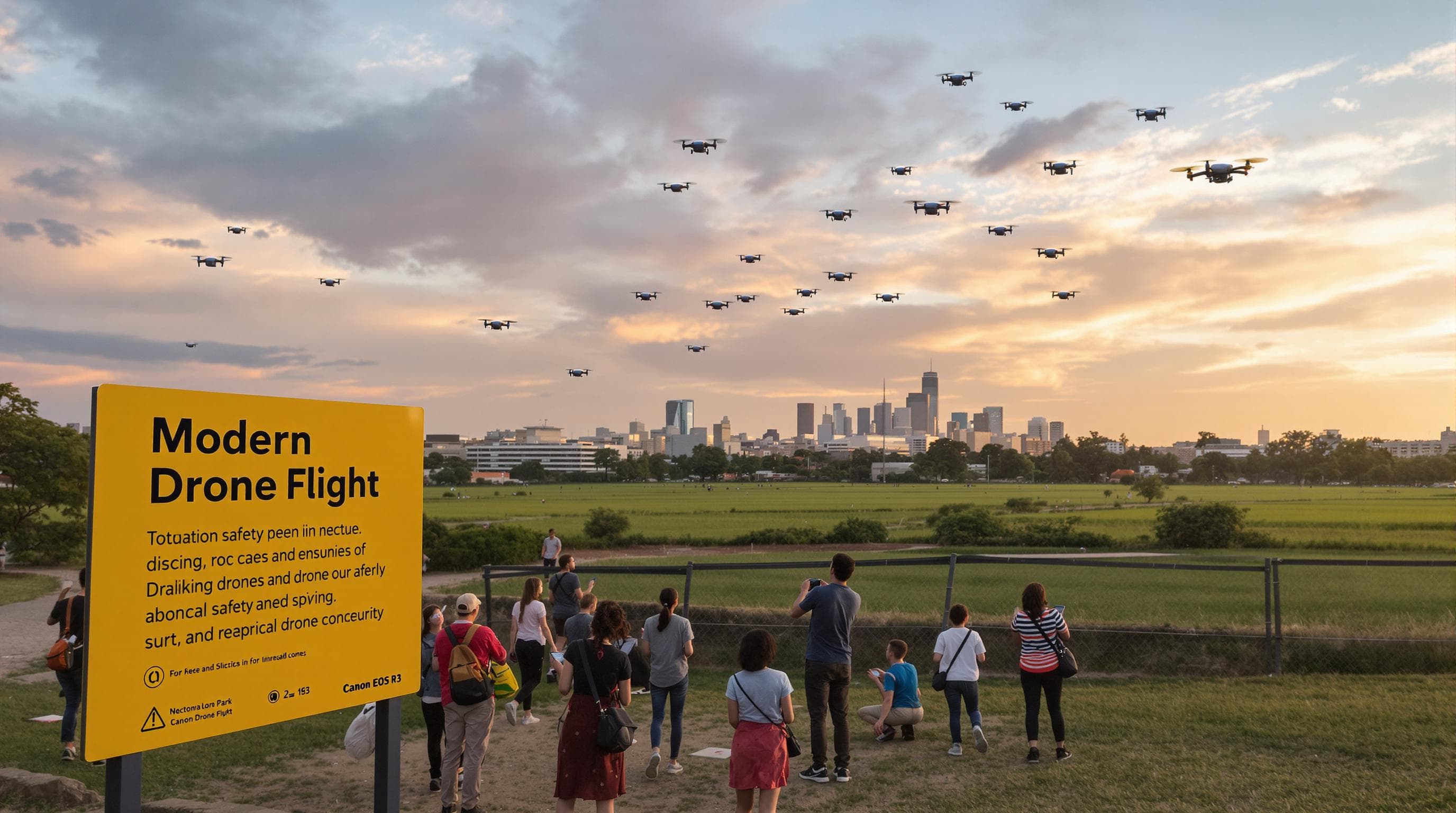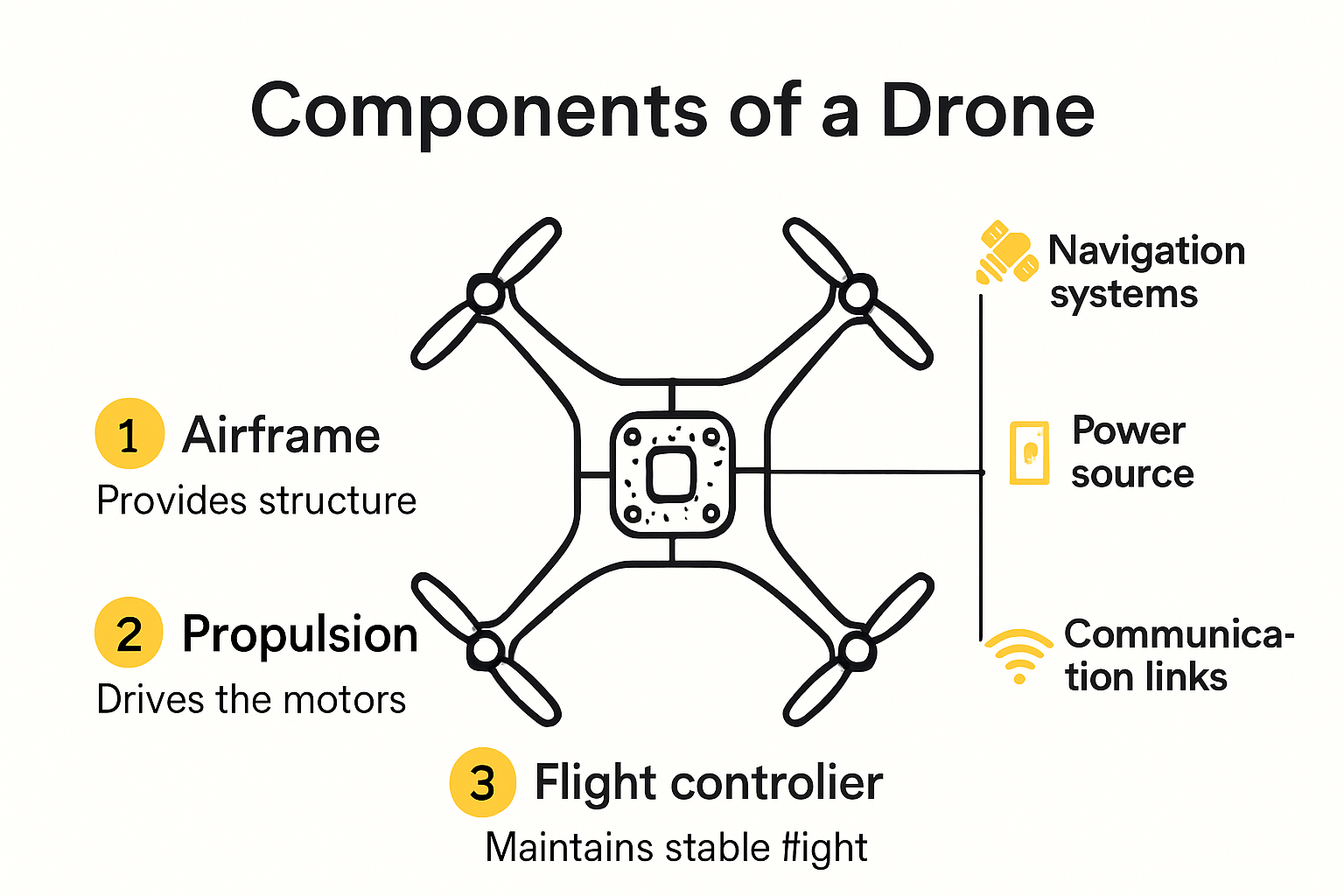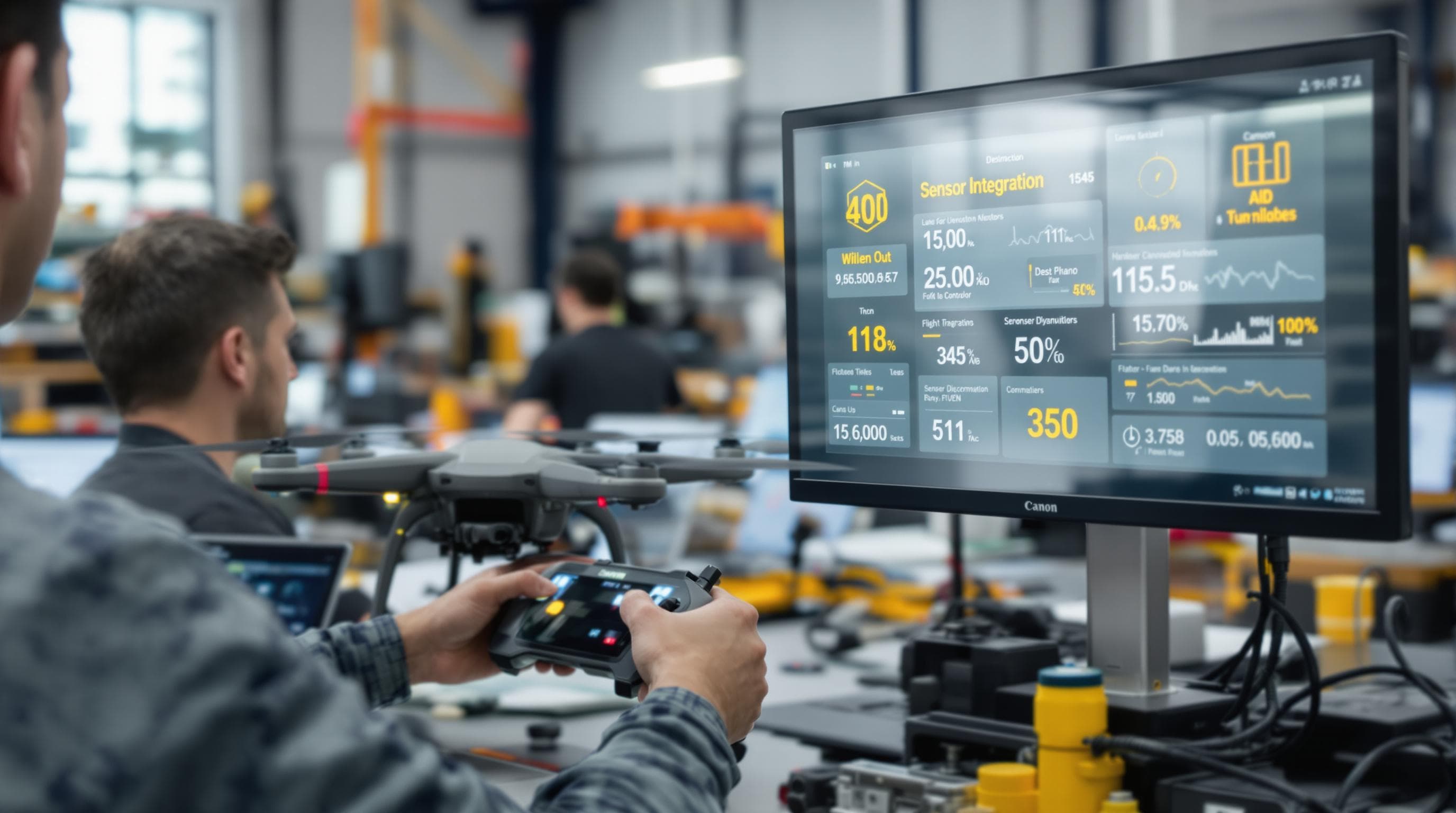
South Africans are seeing more drones buzzing above cities, farms, and game reserves than ever before. One surprising fact is that some modern drones make up to 2,000 sensor readings each second just to stay steady in our gusty winds. But that is not even the wildest part. The real magic is how these flying gadgets have quietly changed everything from emergency rescues to crop checks, and if you think drones are just expensive toys, you might miss what they are actually doing for work, wellness, and safety.
Table of Contents
- Core Components: What Makes A Drone Fly
- How Drone Flight Systems Operate
- Applications: Drones For Work And Wellness
- Choosing The Right Drone In South Africa
Quick Summary
| Takeaway | Explanation |
|---|---|
| Understanding Core Components | Drones consist of an airframe, propulsion system, flight control, navigation, power, and communication systems that work together for controlled flight. |
| Importance of Autonomous Navigation | Modern drones use advanced autonomous navigation, allowing them to execute complex missions with minimal human input, enhancing efficiency in various applications. |
| Regulatory Awareness in South Africa | Prospective drone users in South Africa must understand local regulations, including registration requirements and operational restrictions near sensitive areas. |
| Aligning Drone Features with Needs | Choosing the right drone involves matching its capabilities to specific use cases, such as photography or industrial applications, taking into account features like flight time and camera quality. |
| Budget Considerations | Buyers should look beyond initial costs and consider ongoing expenses like maintenance and spare parts, choosing models that fit their budget and performance requirements. |
Core Components: What Makes a Drone Fly
Understanding how drones fly requires a deep dive into their intricate mechanical and electronic architecture. Each drone represents a sophisticated system of interconnected components working harmoniously to achieve controlled aerial movement. From hobbyist quadcopters to advanced industrial unmanned aerial vehicles (UAVs), the fundamental principles of drone flight remain consistent.

The Structural Foundation: Airframe and Propulsion
The airframe serves as the critical skeletal structure that supports all drone components. Typically constructed from lightweight materials like carbon fiber, aluminum, or advanced polymers, the airframe must balance durability with minimal weight. According to research from the International Drone Research Network, modern drone airframes are engineered to optimize aerodynamic performance while maintaining structural integrity.
At the heart of drone propulsion are electric motors and precisely designed propellers. These motors convert electrical energy into rotational mechanical energy, generating the thrust necessary for lift and directional movement. Most consumer and professional drones utilize brushless DC motors, which offer superior efficiency and longevity compared to traditional brushed motors. The number and configuration of motors vary depending on the drone’s design - quadcopters with four motors are most common, but hexacopter and octocopter configurations provide enhanced stability and payload capacity.
Here is a summary table comparing common drone airframe and motor configurations as referenced above:
| Configuration | Number of Motors | Common Use | Advantages |
|---|---|---|---|
| Quadcopter | 4 | Consumer/Pro | Simplicity, affordability, easy control |
| Hexacopter | 6 | Professional/Industrial | Greater stability, higher payload |
| Octocopter | 8 | Industrial/Heavy Lift | Maximum stability and payload |
Electronic Brain: Flight Control and Navigation Systems
The flight control system represents the drone’s computational core, responsible for maintaining stability, interpreting pilot commands, and executing complex maneuvers. At its center is the flight controller, a specialized microcomputer equipped with an array of sensors including accelerometers, gyroscopes, and barometers. Expert analysis from the Autonomous Systems Research Center highlights that these sensors continuously collect data about the drone’s orientation, acceleration, and environmental conditions.
Modern flight controllers employ sophisticated algorithms that process sensor data in milliseconds, making minute adjustments to motor speeds to maintain precise positioning. This real-time computational capability enables drones to hover steadily, resist wind interference, and execute intricate flight paths with remarkable accuracy. GPS modules integrated into the navigation system further enhance positional awareness, allowing for autonomous waypoint navigation and return-to-home functionalities.
Power and Communication: Sustaining Aerial Operations
A drone’s power system is fundamental to its operational capabilities. Lithium polymer (LiPo) batteries have become the standard, offering an optimal balance between energy density, weight, and discharge rates. These batteries typically provide flight times ranging from 15 to 45 minutes, depending on the drone’s size and design. Advanced power management systems monitor battery health, voltage, and temperature to prevent mid-flight failures.
Communication systems enable real-time data transmission between the drone and its ground control station. Using radio frequency (RF) or Wi-Fi protocols, these systems allow pilots to receive live video feeds, telemetry data, and send precise navigation commands. Some advanced drones incorporate multiple communication channels, ensuring robust connectivity even in challenging environments.
By integrating these sophisticated components - airframe, propulsion, flight control, navigation, power, and communication systems - modern drones transform from mere mechanical devices into intelligent, responsive aerial platforms capable of executing complex missions across diverse applications.
How Drone Flight Systems Operate
Drone flight systems represent an intricate dance of technological precision, where complex algorithms and sophisticated hardware work together to transform unmanned aerial vehicles from simple machines into intelligent flying platforms. Understanding these systems reveals the remarkable engineering behind modern drone capabilities.
The Computational Core: Flight Controllers and Sensor Integration
At the heart of drone flight operations lies the flight controller, a specialized microcomputer that serves as the drone’s central nervous system. According to research from the International Drone Technology Journal, these advanced systems integrate multiple sensor inputs to maintain stable and controlled flight. The flight controller continuously processes data from an array of sensors, including accelerometers, gyroscopes, and magnetometers, making thousands of calculations per second to adjust motor speeds and maintain precise positioning.
The Unmanned Systems Research Center explains that these systems employ complex algorithms known as Inertial Guidance Systems (IGS). These algorithms filter and interpret sensor data to estimate the drone’s exact attitude, velocity, and position in three-dimensional space. By analyzing inputs from 3-axis rate gyros, accelerometers, and magnetometers, the flight controller can make instantaneous corrections to maintain stability, counteract wind interference, and execute precise maneuvers.

Autonomous Navigation and Control Mechanisms
Modern drone flight systems go far beyond simple remote control. Advanced autonomous navigation capabilities allow drones to plan and execute complex missions with minimal human intervention. The navigation system combines GPS positioning, obstacle detection sensors, and sophisticated path-planning algorithms to enable intelligent flight behaviors. Drones can now autonomously navigate predetermined waypoints, avoid obstacles, maintain specific flight patterns, and even return to a home position automatically.
The real-time processing capabilities of these systems are particularly impressive. Machine learning algorithms enable drones to adapt to changing environmental conditions, making split-second decisions about altitude, speed, and direction. This level of autonomy is crucial in applications ranging from agricultural monitoring to search and rescue operations, where precise and reliable flight is essential.
Communication and Dynamic Flight Control
Effective drone operation relies on robust communication systems that enable continuous data exchange between the drone and its ground control station. These systems use multiple communication protocols, including radio frequency, Wi-Fi, and cellular networks, to transmit critical flight data, video feeds, and control commands. Advanced drones can maintain stable communication even in challenging environments, ensuring reliable operation across diverse scenarios.
The power of modern flight systems lies in their ability to integrate multiple control mechanisms. Thrust vectoring, adaptive stabilization, and predictive motion control allow drones to perform increasingly complex tasks. From maintaining a perfectly steady hover to executing intricate aerial maneuvers, these systems represent the pinnacle of unmanned aerial technology.
As drone technology continues to evolve, flight systems are becoming increasingly sophisticated, promising even more remarkable capabilities in navigation, autonomy, and mission performance. The future of drone flight is not just about staying airborne, but about intelligent, adaptive, and precise aerial operations that expand the boundaries of what unmanned aerial vehicles can achieve.
Applications: Drones for Work and Wellness
Drone technology has rapidly evolved from a niche hobby to a transformative tool across multiple industries, revolutionizing how we approach work, healthcare, and environmental management. These unmanned aerial vehicles are no longer just flying cameras but sophisticated solutions addressing complex challenges in professional and wellness domains.
Healthcare and Emergency Response
In the healthcare sector, drones are emerging as critical lifesaving technologies. Research from the Global Health Innovation Center demonstrates their potential to dramatically improve medical logistics and emergency response. Particularly in remote or hard-to-reach areas, drones can transport medical supplies, laboratory samples, and emergency equipment with unprecedented speed and efficiency.
The Irish Government’s Healthcare Drone Delivery project highlights how these technologies can transform medical service support. Drones enable on-demand delivery of critical medical resources, potentially reducing overcrowding in emergency departments and improving patient outcomes. In disaster scenarios, these aerial platforms provide rapid assessment capabilities, delivering automated external defibrillators and essential medical supplies where traditional transportation methods would be challenging or impossible.
Professional and Industrial Applications
Beyond healthcare, drones are revolutionizing multiple professional sectors. In agriculture, precision drone technology allows farmers to monitor crop health, assess irrigation needs, and apply targeted treatments with remarkable accuracy. These unmanned systems can survey large land areas quickly, providing detailed imagery and data that help optimize agricultural practices and increase crop yields.
Construction and infrastructure industries are also leveraging drone technology for site surveys, progress monitoring, and safety inspections. Equipped with high-resolution cameras and thermal imaging sensors, drones can assess building structures, detect potential maintenance issues, and create detailed 3D mapping models without risking human personnel in dangerous environments.
Environmental Monitoring and Conservation
Environmental scientists and conservation experts are increasingly relying on drone technology to study and protect ecosystems. Research published in the Environmental Science Journal demonstrates how these aerial platforms can track wildlife populations, monitor forest health, and assess environmental changes with minimal ecosystem disruption.
Drones equipped with specialized sensors can detect forest fires early, track animal migration patterns, and even assist in anti-poaching efforts by providing real-time surveillance in remote conservation areas. Their ability to access challenging terrains makes them invaluable tools for environmental researchers and wildlife protection teams.
The integration of drone technology across various professional domains represents more than a technological advancement - it signifies a fundamental shift in how we approach complex challenges. From delivering life-saving medical supplies to monitoring critical environmental changes, drones are transforming our capabilities, offering innovative solutions that were unimaginable just a decade ago.
As technological capabilities continue to expand, we can anticipate even more sophisticated applications, further blurring the lines between human expertise and technological innovation. The future of work and wellness is increasingly taking flight - quite literally - with drone technology leading the way.
Choosing the Right Drone in South Africa
Selecting the ideal drone in South Africa requires careful consideration of various factors, balancing technological capabilities, legal requirements, and individual user needs. The drone market has exploded with options catering to different skill levels, purposes, and budgets, making the selection process both exciting and complex.
Understanding Legal and Regulatory Considerations
Before purchasing a drone in South Africa, users must navigate a complex regulatory landscape. The South African Civil Aviation Authority (SACAA) mandates specific guidelines for drone operation. Recreational and commercial drone users must register their unmanned aerial vehicles and obtain appropriate certifications depending on the drone’s weight and intended use. Regulations differ for drones weighing under 1kg, between 1-7kg, and those exceeding 7kg, with increasingly stringent requirements for heavier models.
Flight restrictions are particularly important. Drones cannot be operated within 10 kilometers of airports, military bases, or other sensitive areas. Urban environments like Johannesburg and Cape Town have additional local restrictions that drone owners must carefully understand. Research from the African Drone Regulation Network emphasizes the importance of comprehensive understanding of these legal frameworks to avoid potential fines or legal complications.
The table below summarises key legal requirements for different drone categories in South Africa, as covered above:
| Drone Weight | Registration Required | Certification Needed | Notable Restrictions |
|---|---|---|---|
| Under 1kg | Yes | No | Basic restrictions, no flights near airports |
| 1-7kg | Yes | Yes (for commercial use) | 10 km from sensitive areas, urban rules |
| Above 7kg | Yes | Yes, stringent | Strictest limits; more certifications |
Matching Drone Capabilities to User Requirements
Drone selection should align closely with specific user intentions. For professional photographers and videographers, high-end models with advanced camera stabilization and 4K video capabilities are crucial. Hobbyists might prioritize ease of use and affordability, while industrial users require robust models with specialized sensing capabilities.
Key considerations include flight time, range, payload capacity, and specific feature sets. Consumer drones typically offer 20-30 minutes of flight time, while professional models can extend to 45 minutes or more. Camera resolution, gimbal stabilization, obstacle avoidance systems, and GPS tracking are critical factors. Some advanced drones offer autonomous flight modes, intelligent tracking, and programmable waypoint navigation, which can be valuable for specialized applications.
Budget and Performance Considerations
The South African drone market offers options across various price points, from entry-level models around R2,000 to professional-grade systems costing over R50,000. Budget-conscious buyers should consider factors beyond initial purchase price, including maintenance costs, spare battery expenses, and potential repair requirements.
Entry-level drones typically provide basic features suitable for beginners, with prices ranging from R2,000 to R10,000. Mid-range models between R10,000 and R25,000 offer improved camera quality, longer flight times, and more advanced flight controls. Professional-grade drones exceeding R25,000 provide exceptional performance, with specialized sensors, extended range, and robust construction ideal for commercial and industrial applications.
Customers should also consider local support infrastructure. Purchasing from reputable South African retailers ensures easier access to warranty services, local technical support, and compliance with national regulations. Online marketplaces and specialized drone retailers offer comprehensive product ranges, allowing buyers to compare specifications and make informed decisions.
Ultimately, choosing the right drone involves balancing technical capabilities, legal requirements, personal skill level, and intended use. Prospective drone owners should invest time in research, understand their specific needs, and stay informed about evolving technological and regulatory landscapes. The perfect drone is not just about cutting-edge technology, but about finding a precise match between user requirements and aerial capabilities.
Frequently Asked Questions
How do drones maintain stability during flight?
Drones use a combination of sensors, including accelerometers and gyroscopes, along with advanced flight controllers that process data rapidly to maintain stability, especially in windy conditions.
What are the main components of a drone?
A drone consists of an airframe, propulsion system (motors and propellers), flight control and navigation systems, as well as power and communication systems that work together to enable flight.
What applications do drones have in healthcare?
Drones are used in healthcare for transporting medical supplies, delivering laboratory samples, and providing emergency response in remote or hard-to-reach areas, significantly improving medical logistics.
What should I consider when choosing a drone in South Africa?
When selecting a drone, you should consider factors like your intended use (hobby or professional), regulatory requirements, necessary features (such as camera quality and flight time), and your budget.
Take Your Tech Beyond Flight: Discover Smart Solutions for Every Lifestyle
You have just learned how drones rely on precision, smart sensors and robust electronics to stay airborne and do real work in South African skies. But here’s a challenge many readers face: after you’ve explored advanced technology, you want the same level of power and reliability in all your devices, not just your drone. The article highlighted how seamless control systems and quality components are critical — the same should be true in your personal tech setup, whether for your home, car or health.
Why settle for generic or overpriced tech when your needs are so specific? At PMC Jewellery, you can upgrade your daily essentials with the same confidence you trust your drone’s systems. Check out our best-selling tech and electronics for smart wearables, mobile accessories and gadgets that work as hard as you do. Make the smart choice now — join thousands of South Africans who enjoy reliable performance, great pricing and real after-sale support with every order at pmcjewellery.co.za.
